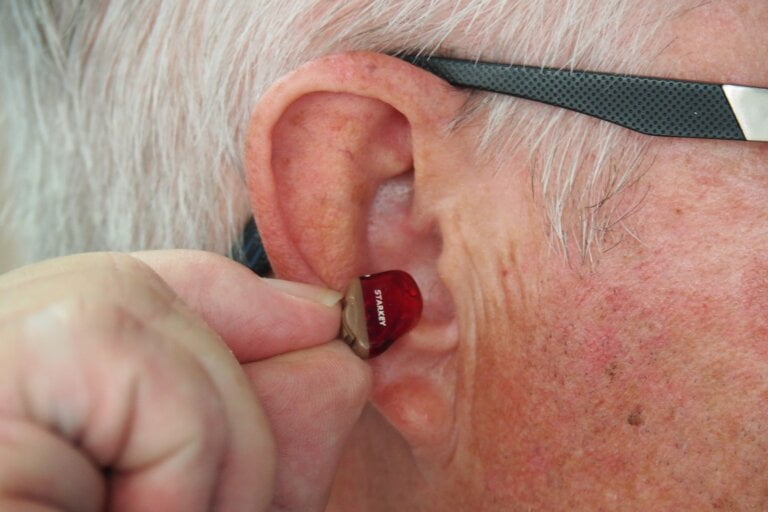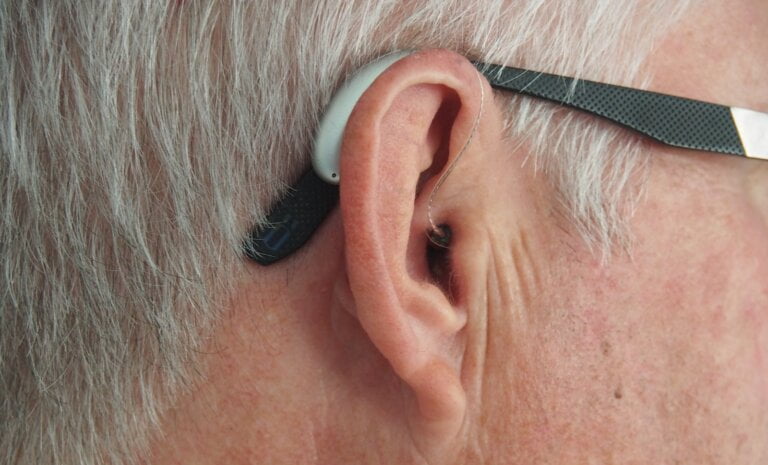Flexible Learning: Online Continuing Education in Manual Instrument Ear Wax Removal
As the field of healthcare continues to evolve, it is essential for healthcare professionals to stay updated with the latest advancements and techniques. One area that requires constant learning and training is the removal of ear wax using manual instruments. In the past, healthcare professionals had to rely on traditional classroom-based learning to acquire the necessary knowledge and skills. However, with the advent of online continuing education, professionals now have the flexibility to learn at their own pace and convenience.
The Benefits of Flexible Learning
Flexible learning through online continuing education offers numerous advantages for healthcare professionals seeking to enhance their expertise in manual instrument ear wax removal. Here are some of the key benefits:
1. Convenience and Flexibility
One of the major advantages of online continuing education is the convenience and flexibility it offers to healthcare professionals. With online courses, professionals can learn at their own pace and convenience without the need to adhere to a strict schedule. They can access the course material and lectures at any time, fitting their studies around their work and personal commitments. This flexibility eliminates the need to travel to physical classrooms, enabling professionals to save time and resources.
Moreover, online courses often provide the option to pause, rewind, and replay lectures, allowing professionals to review and reinforce their understanding of the content. This flexibility in learning ensures that healthcare professionals can dedicate sufficient time and effort to master the techniques of manual instrument ear wax removal.
2. Cost-Effective
Traditional classroom-based training can be expensive, considering the costs of travel, accommodation, and course fees. Online continuing education eliminates these additional expenses, making it a cost-effective option for healthcare professionals. They can access high-quality educational resources and instruction without breaking the bank.
In addition, online courses often provide lifetime access to the course materials, allowing professionals to revisit the content whenever needed. This ensures ongoing learning and continuous development without the need for additional expenses.
3. Access to Expert Knowledge
By opting for online continuing education, healthcare professionals gain access to expert knowledge from experienced instructors and industry leaders. These courses are designed and delivered by professionals who have extensive experience in manual instrument ear wax removal. They provide in-depth knowledge and practical insights that professionals can apply in their clinical practice.
Online courses often feature recorded lectures by renowned experts in the field, ensuring that professionals receive guidance from the best in the industry. Professionals can benefit from the expertise and experience of these instructors, gaining valuable knowledge and skills that can greatly enhance their practice.
4. Interactive Learning Experience
Online continuing education courses often incorporate interactive elements to enhance the learning experience. These may include quizzes, case studies, and virtual simulations that allow professionals to apply their knowledge in a practical setting. Through interactive learning, professionals can develop a deeper understanding of the subject matter and improve their skills effectively.
Interactive elements, such as quizzes and case studies, provide opportunities for professionals to test their knowledge and reinforce their learning. Virtual simulations, on the other hand, offer a realistic environment where professionals can practice their manual instrument ear wax removal techniques without the need for real patients. This hands-on experience enhances their confidence and proficiency in performing the procedures.
5. Networking Opportunities
Online continuing education platforms often provide opportunities for professionals to connect and network with peers from around the world. These interactions facilitate knowledge sharing, collaboration, and the exchange of ideas. Networking with like-minded professionals can be invaluable in expanding professional horizons and staying updated with the latest trends and practices in manual instrument ear wax removal.
Through online forums, discussion boards, and virtual communities, healthcare professionals can engage in meaningful conversations with their peers. They can share their experiences, seek advice, and learn from the diverse perspectives of professionals from different backgrounds and specialties. This networking aspect of online continuing education fosters a sense of community and allows professionals to build valuable connections that can further enhance their professional growth.
The Content of Online Continuing Education Courses
Online continuing education courses in manual instrument ear wax removal cover a wide range of topics to ensure healthcare professionals receive comprehensive training. The content typically includes the following:
1. Anatomy and Physiology of the Ear
Understanding the anatomy and physiology of the ear is essential for healthcare professionals involved in manual instrument ear wax removal. Online courses provide detailed lessons on the structure and function of the ear, including the external, middle, and inner ear. Professionals learn about the various components and how they relate to the removal of ear wax.
In-depth lessons on the anatomy and physiology of the ear enable healthcare professionals to develop a thorough understanding of the intricate structures involved in ear wax removal. They learn about the different types of ear wax, their characteristics, and the potential challenges that may arise during the removal process. This knowledge lays the foundation for safe and effective manual instrument ear wax removal.
2. Common Ear Wax Problems
Healthcare professionals need to be familiar with the different types of ear wax problems that patients may experience. Online courses cover common issues such as impacted ear wax, excessive ear wax production, and complications associated with improper or ineffective removal techniques. Professionals learn to identify these problems and choose appropriate interventions.
By exploring common ear wax problems, professionals gain insights into the various symptoms, causes, and consequences that can arise from these conditions. They learn to recognize the signs of impacted ear wax, such as hearing loss, earache, and tinnitus. Additionally, they become familiar with the potential complications that may arise from improper removal techniques, such as ear canal injury or infection. This knowledge equips professionals with the ability to provide timely and appropriate interventions to alleviate patients’ ear wax problems.
3. Techniques for Manual Instrument Ear Wax Removal
The core focus of online continuing education courses in manual instrument ear wax removal is to teach professionals the proper techniques. These courses provide step-by-step instructions on how to use manual instruments effectively and safely. Professionals learn about various instruments, such as curettes and forceps, and the correct methods for their application.
Through detailed demonstrations and practical exercises, online courses guide healthcare professionals in mastering the techniques of manual instrument ear wax removal. Professionals learn the correct positioning and manipulation of instruments to ensure optimal effectiveness and minimize patient discomfort. They also learn about the importance of gentle handling and proper visualization techniques to prevent inadvertent injury or complications.
4. Safety and Infection Control
Healthcare professionals must prioritize patient safety and infection control during manual instrument ear wax removal procedures. Online courses dedicate a significant portion of their content to educating professionals on best practices for maintaining a sterile environment, preventing cross-contamination, and ensuring patient comfort and safety throughout the procedure.
Comprehensive modules on safety and infection control equip healthcare professionals with the knowledge and skills to create a safe and hygienic environment for ear wax removal procedures. They learn about the proper use and disposal of personal protective equipment (PPE), as well as the appropriate cleaning and sterilization techniques for reusable instruments. Professionals also gain insights into effective communication strategies to ensure patient comfort and cooperation during the procedure.
5. Troubleshooting and Complications
Despite their best efforts, healthcare professionals may encounter challenges or complications during manual instrument ear wax removal. Online continuing education courses equip professionals with the necessary knowledge to troubleshoot issues and handle complications effectively. This includes understanding when to refer to a specialist or adjust their techniques to ensure optimal patient outcomes.
By providing comprehensive guidance on troubleshooting and complications, online courses prepare healthcare professionals for unexpected situations that may arise during ear wax removal procedures. Professionals learn to identify and address common challenges, such as the presence of foreign bodies or excessive bleeding. They also gain the skills to respond to complications, such as perforation of the tympanic membrane or allergic reactions. This knowledge enables professionals to make informed decisions and take appropriate actions to ensure the safety and well-being of their patients.
Choosing the Right Online Continuing Education Program
When selecting an online continuing education program for manual instrument ear wax removal, healthcare professionals should consider the following factors:
-
Accreditation: Ensure that the program is accredited by a recognized accreditation body to ensure the quality and validity of the education received.
-
Course Content: Review the program’s curriculum and ensure it covers all the necessary topics in detail. Look for courses that offer comprehensive materials and practical demonstrations to enhance learning.
-
Instructor Qualifications: Look for courses taught by experienced instructors who are experts in the field of manual instrument ear wax removal. Check their credentials and seek courses where instructors have a strong background in healthcare and specialized knowledge in ear wax removal techniques.
-
Reviews and Testimonials: Read reviews and testimonials from other healthcare professionals who have taken the course to gauge its effectiveness and quality. Look for positive feedback regarding the relevance and applicability of the course content.
-
Cost and Flexibility: Consider the cost of the program and its flexibility to fit within your budget and schedule. Look for programs that offer reasonable pricing options and the ability to access the course materials at any time.
By carefully considering these factors, healthcare professionals can choose the right online continuing education program that suits their individual needs and facilitates their professional growth in manual instrument ear wax removal.
In conclusion, flexible learning through online continuing education offers healthcare professionals the opportunity to enhance their expertise in manual instrument ear wax removal conveniently and cost-effectively. With the flexibility to learn at their own pace and access expert knowledge, professionals can stay updated with the latest techniques and advancements in the field. By choosing the right online program and investing in their professional development, healthcare professionals can provide optimal care to their patients while expanding their own skillset.
FAQ
-
What are the benefits of flexible learning through online continuing education?
- Online continuing education offers convenience and flexibility, allowing professionals to learn at their own pace and access course material at any time.
- It is cost-effective, eliminating additional expenses such as travel and accommodation.
- Professionals gain access to expert knowledge from experienced instructors.
- Courses often incorporate interactive elements, enhancing the learning experience.
-
What does online continuing education in manual instrument ear wax removal cover?
- Online courses cover topics such as the anatomy and physiology of the ear, common ear wax problems, techniques for manual instrument ear wax removal, safety and infection control, and troubleshooting and complications.
-
How can healthcare professionals ensure patient safety and infection control during manual instrument ear wax removal?
- Online courses provide guidance on maintaining a sterile environment, preventing cross-contamination, and ensuring patient comfort and safety throughout the procedure.
- Professionals learn about the proper use and disposal of personal protective equipment (PPE) and effective communication strategies.
-
What factors should healthcare professionals consider when choosing an online continuing education program for manual instrument ear wax removal?
- Accreditation: Ensure the program is accredited by a recognized body.
- Course Content: Review the curriculum and ensure all necessary topics are covered.
- Instructor Qualifications: Look for courses taught by experienced instructors with specialized knowledge in ear wax removal.
- Reviews and Testimonials: Read feedback from other professionals to gauge the course’s effectiveness and quality.
- Cost and Flexibility: Consider the program’s cost and flexibility to fit within budget and schedule.







